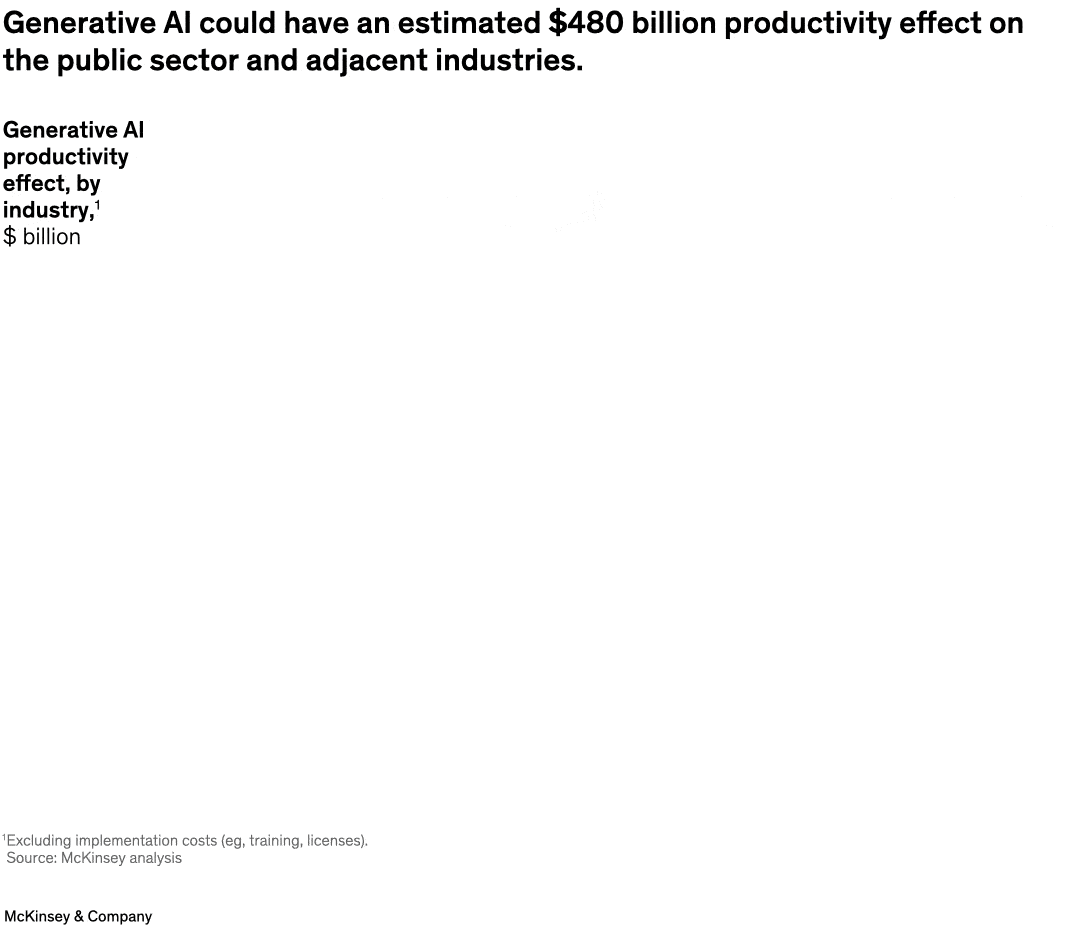Davos—the World Economic Forum’s annual meeting—is in full swing through January 19. All this week, our daily charts will focus on some of the key themes of the event, including resilience, sustainability, reimagining globalization, generative AI, and inclusive, equitable growth. For more, see “McKinsey and the World Economic Forum 2024.”
Using generative AI capabilities in the public sector, healthcare, and education could realize global productivity gains of nearly half a trillion dollars. Government agencies in Asia, Europe, and the United States already have implemented generative AI programs to streamline customer service and generate internal reports, senior partner Damien Bruce and colleagues explain. AI models could also help to speed software development, summarize content, and create drafts of proposals.

Image description:
A square pie chart shows generative AI’s $3.442 trillion productivity effect by industry. These industries are healthcare at $200 billion, public and social sector at $100 billion, education at $180 billion, high tech at $351 billion, retail at $283 billion, banking at $273 billion, consumer packaged goods at $216 billion, energy at $194 billion, services (technical, professional, scientific) at $171 billion, transport and logistics at $169 billion, electronics and semiconductors at $132 billion, construction at $117 billion, chemicals at $112 billion, and other at $944 billion. Healthcare, the public and social sector, and education together account for $480 billion.
End of image description.
To read the article, see “Unlocking the potential of generative AI: Three key questions for government agencies,” December 7, 2023.